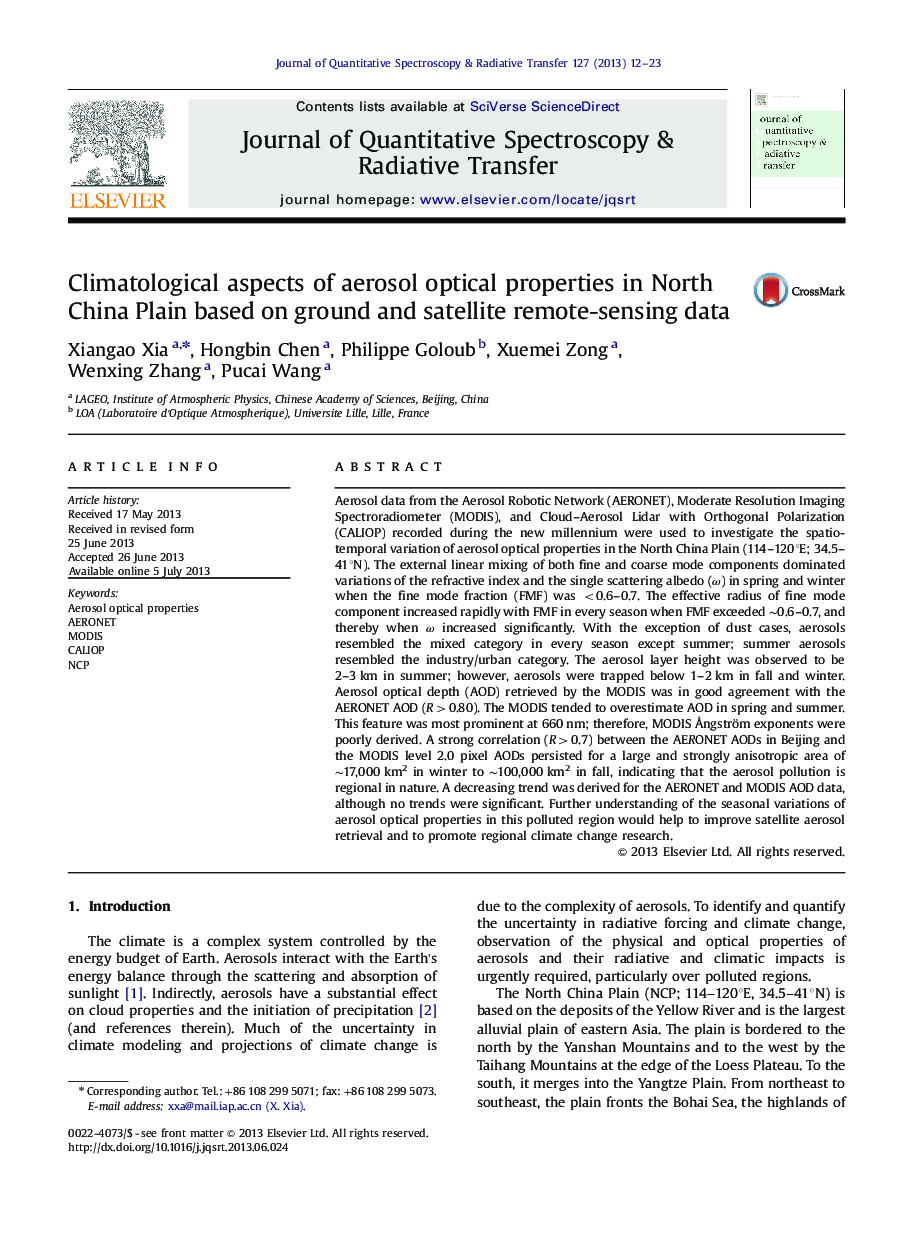| Article ID | Journal | Published Year | Pages | File Type |
|---|---|---|---|---|
| 5428786 | Journal of Quantitative Spectroscopy and Radiative Transfer | 2013 | 12 Pages |
Highlightâ¢Variation of refractive index and SSA with fine mode fraction was revealed.â¢Seasonal variation of aerosol type was clearly shown.â¢MODIS overestimated AOD and this feature showed up more prominently at 660 nm.â¢Beijing AOD was correlated to MODIS AOD for a large and strongly anisotropic area.â¢A decreasing trend was derived for the AERONET and MODIS AOD data.
Aerosol data from the Aerosol Robotic Network (AERONET), Moderate Resolution Imaging Spectroradiometer (MODIS), and Cloud-Aerosol Lidar with Orthogonal Polarization (CALIOP) recorded during the new millennium were used to investigate the spatio-temporal variation of aerosol optical properties in the North China Plain (114-120°E; 34.5-41°N). The external linear mixing of both fine and coarse mode components dominated variations of the refractive index and the single scattering albedo (Ï) in spring and winter when the fine mode fraction (FMF) was <0.6-0.7. The effective radius of fine mode component increased rapidly with FMF in every season when FMF exceeded â¼0.6-0.7, and thereby when Ï increased significantly. With the exception of dust cases, aerosols resembled the mixed category in every season except summer; summer aerosols resembled the industry/urban category. The aerosol layer height was observed to be 2-3 km in summer; however, aerosols were trapped below 1-2 km in fall and winter. Aerosol optical depth (AOD) retrieved by the MODIS was in good agreement with the AERONET AOD (R>0.80). The MODIS tended to overestimate AOD in spring and summer. This feature was most prominent at 660 nm; therefore, MODIS à ngström exponents were poorly derived. A strong correlation (R>0.7) between the AERONET AODs in Beijing and the MODIS level 2.0 pixel AODs persisted for a large and strongly anisotropic area of â¼17,000 km2 in winter to â¼100,000 km2 in fall, indicating that the aerosol pollution is regional in nature. A decreasing trend was derived for the AERONET and MODIS AOD data, although no trends were significant. Further understanding of the seasonal variations of aerosol optical properties in this polluted region would help to improve satellite aerosol retrieval and to promote regional climate change research.
